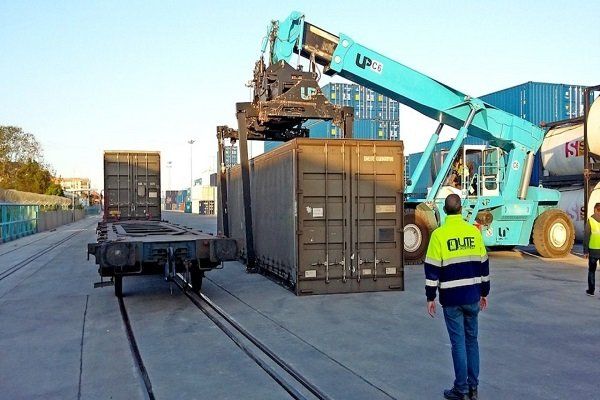by Escola Europea - Intermodal Transport
•
28 November 2020
As far as loading containers is concerned, a quick internal and external inspection is indispensable before filling and also after emptying the containers. In this regard, the following are some useful hints that can help minimize damage to the cargo. Checklist before filling: External - Holes: Obvious holes or tears in the exterior panels. - Doors: Broken or twisted door hinges, locks, seals or seal handles. - Roof arches: Open Top containers must have all roof arches in place. If the roof is retractable then the bows should slide smoothly to the ends of the container. - Labels: Any labels left on the outside of the container that refer to the previous cargo must be removed. Internal - Clean: There must be no leftovers (sweepings, dust, grease or liquid) from the previous load. - Dry: The interior must be dry and free of any trace of sweating or freezing. - Disinfected: There must be no evidence of parasites, insects or rodents that could contaminate the cargo and cause delays with the health authorities. - Unblemished: If it is to be used with delicate goods susceptible to damage by odours, then the container must be scented. This should be checked at the time of opening the doors, when any persistent smell will be strongest. - Airtight: This is best checked by entering the container and closing both doors. If light can enter then water can also enter. This also applies to the floor of the container because water can splash upwards during road transport. - Instructions: It is advisable to follow any recommendations set inside the container. Checklist after filling: Depending on the expected quantity of goods stowed in a container, the following checks should be made: - Lashing: The goods must be prepared and secured to withstand the normal stresses and strains of the journey. Above all, the door load must be secured so that it cannot move. - Safety: When closing the doors, all safety latches must be properly engaged by forcing the door seals into compression. - Contents: Any label on the outside of the container announcing the contents will attract burglars and should be removed. - Labels: Dangerous goods labels, if necessary, should be placed in the recommended positions. Labels should be placed in such a way that they do not cover the container number or other distinguishing marks. Checklist before emptying: The following should be checked before emptying: - Security: Check that the seal is intact and that no attempt has been made to force it. - Exterior of the container: Any damage that could have affected the content must be duly observed. - Labels: Before opening the doors, due respect must be given to any labels; such as dangerous goods or bulk cargo labels. - Doors: The right door must be opened carefully. This is to protect against the risk that improperly stowed cargo may fall out onto personnel. Some recommendations on the use of railway containers List of recommendations to be followed by container users, both shippers and carriers, to achieve an optimal result in the physical protection of goods. - Subject to the reservation request, select the most convenient type of container to accommodate the cargo. - Prepare a pre-stretch plan prior to commencement of filling to cover weight/volume considerations and taking into account fill limit points. - Do not load above the payload weight limit of the container. - Do not load above the weight marked by the road transport regulations to be used in transit. - Distribute the weight of the load evenly over the floor of the container. Never stow heavy items on one side and bulky items on the other. - Do not stow heavy goods on top of light goods. - Stow and lash all cargo firmly. - Observe all cargo handling instructions. - Stow goods with sharp corners separately from softer goods. Use appropriate dividers and separating material. - When possible with mixed loads, place packages containing liquid cargo in the lower rows and dry cargo on top. - Use cargo dividers for unpleasant cargo, e.g. hides and black coal. - Do not use clamps or other loading devices unless the goods can withstand them. - Do not load goods into a container with damaged packaging. - Do not stow wet and damp goods with dry goods. - Do not use platforms or packaging that are incompatible with the load. - Do not stow goods with corrupting odours near sensitive goods. - Observe all rules concerning dangerous goods. Use appropriate labels and signs to identify containers loaded with dangerous goods. Stow dangerous cargo near the door when relevant. - Include all necessary documentation. - Record the seal number and container number on all shipping documents. - Never smoke during loading and unloading.







